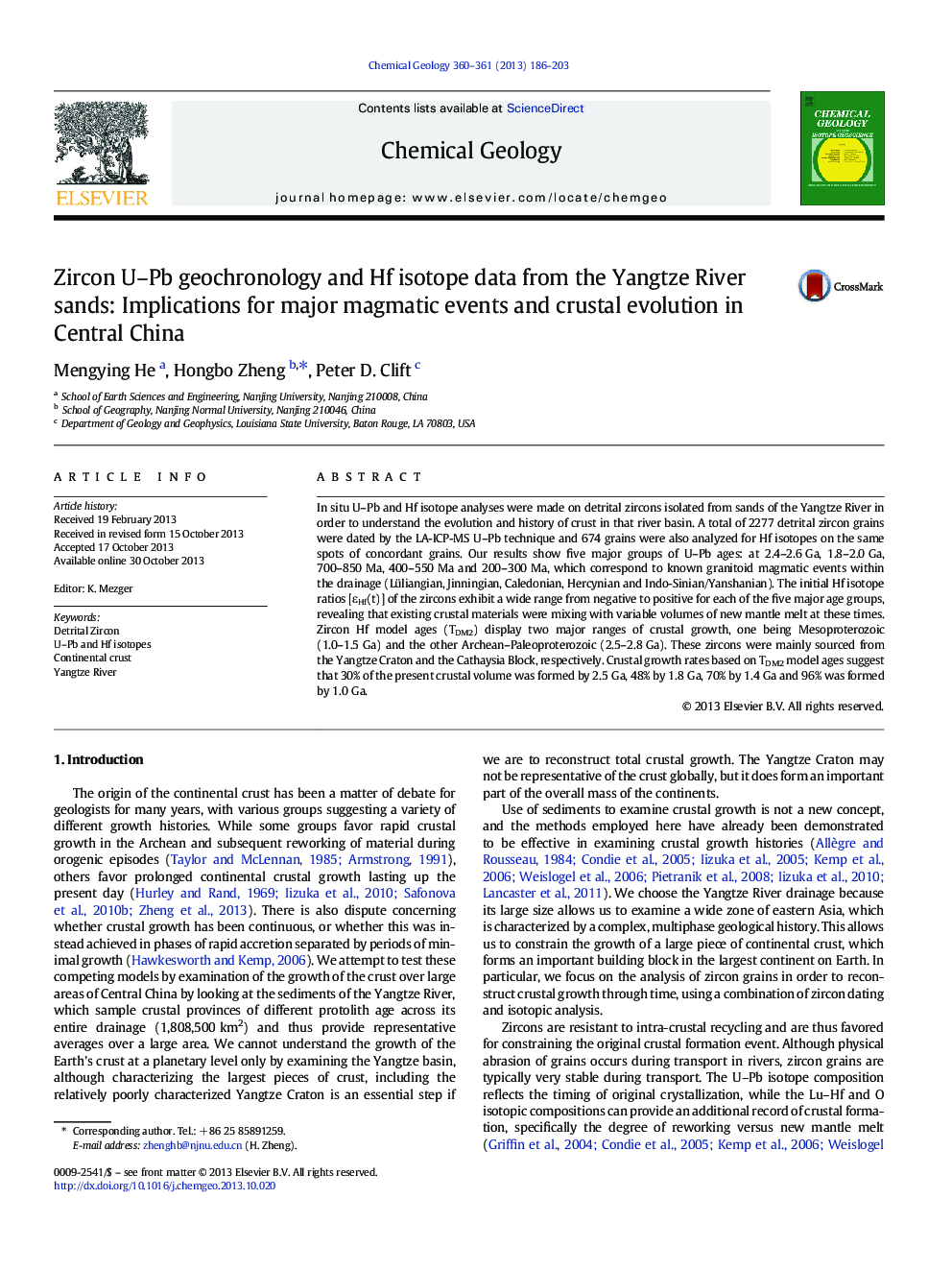| کد مقاله | کد نشریه | سال انتشار | مقاله انگلیسی | نسخه تمام متن |
|---|---|---|---|---|
| 4698870 | 1637609 | 2013 | 18 صفحه PDF | دانلود رایگان |

• We study detrital zircon U–Pb and Hf isotope of sediments in the Yangtze River.
• Major U–Pb age peaks correspond to the previously granitoid magmatic episodes.
• Zircon εHf (t) reveals the influence of crust recycling.
• Zircon Hf model ages suggest two major crustal growth periods.
In situ U–Pb and Hf isotope analyses were made on detrital zircons isolated from sands of the Yangtze River in order to understand the evolution and history of crust in that river basin. A total of 2277 detrital zircon grains were dated by the LA-ICP-MS U–Pb technique and 674 grains were also analyzed for Hf isotopes on the same spots of concordant grains. Our results show five major groups of U–Pb ages: at 2.4–2.6 Ga, 1.8–2.0 Ga, 700–850 Ma, 400–550 Ma and 200–300 Ma, which correspond to known granitoid magmatic events within the drainage (Lüliangian, Jinningian, Caledonian, Hercynian and Indo-Sinian/Yanshanian). The initial Hf isotope ratios [εHf(t)] of the zircons exhibit a wide range from negative to positive for each of the five major age groups, revealing that existing crustal materials were mixing with variable volumes of new mantle melt at these times. Zircon Hf model ages (TDM2) display two major ranges of crustal growth, one being Mesoproterozoic (1.0–1.5 Ga) and the other Archean–Paleoproterozoic (2.5–2.8 Ga). These zircons were mainly sourced from the Yangtze Craton and the Cathaysia Block, respectively. Crustal growth rates based on TDM2 model ages suggest that 30% of the present crustal volume was formed by 2.5 Ga, 48% by 1.8 Ga, 70% by 1.4 Ga and 96% was formed by 1.0 Ga.
Journal: Chemical Geology - Volumes 360–361, 18 December 2013, Pages 186–203